Chinese Tourists on Kinmen
+ PLA Purges!
On Sunday we dropped one of our best shows of the year featuring former top China analyst for the CIA
talking through what’s really going on inside the PLA purges. Have a look at the transcript, listen in on your favorite podcast app or watch the video on YouTube.Chinese tourism has returned to Kinmen and Matsu, but cross-strait tension is limiting its impact. Jordyn Haime flew from Taipei to Kinmen to investigate China’s aspirations for the ROC-governed island and to explore the role of tourism in geopolitics.
Finding the Chinese tourists in Taiwan-controlled Kinmen is easy: just follow the electric scooters. They accelerate no faster than 25 kilometers per hour, tutting leisurely along Kinmen’s cross-island roads. You can see them gathered in dense clusters outside Poya and Cosmed — favorite shopping destinations for cosmetics and skincare among Chinese tourists — or parked nearby popular spots for social media photoshoots (known on Chinese social media as “check-in points” or 打卡点). That’s where I met Mike, Jenny, and Juan-juan, three twenty-something Fujianese among a crowd of many lined up at the side of the road to snap a picture in front of an aesthetically pleasing bus stop.
They came here during China’s “golden week” — the 8-day national holiday in China encompassing National Day (国庆节) and Mid-Autumn Festival (中秋节) — to escape the masses of crowds traveling elsewhere in China.
“Since everyone is traveling throughout the mainland, hotels are more expensive. Coming here [to Kinmen], it’s still pretty close, but there’s still a feeling that you’ve left the region (出境),” Mike said. “Left the region, not the country — that part’s very important!”
What is there to do in Kinmen when, for the most part, Chinese tourists (referred to colloquially as 陆客) have little interest in visiting the leftover military infrastructure scattered throughout the island, now transformed into museums and memorials?
“Just take pictures, watch some movies, eat. You can have more of a relaxing trip here, a simple one,” Mike said. Later, they plan to see the new Conjuring movie, which never got a release in China. Other Chinese, too, took advantage of Kinmen’s proximity to catch cult films like Demon Slayer, released in Taiwan two months earlier than in China, and An Unfinished Film, which is banned.
Chinese tourists posing at a bus stop in Kinmen. Jordyn Haime for ChinaTalk.
It’s been about a year since Taiwan’s Kinmen and Matsu islands reopened to mainland Chinese tourists. Kinmen is located about 6 kilometers from the Chinese port city of Xiamen, a distance that takes just 30 minutes to cross by ferry. As such, mainland tourism has been one of Kinmen’s primary industries since 2008, when the cross-strait engagement mechanism known as the “mini three links” (小三通, meaning postal, transportation, and trade links), aimed at improving development in Taiwan’s offshore islands, was expanded. But all that was put on hold in 2020, when the mini three links were suspended due to COVID-19.
Tourism between Kinmen, Matsu (another group of outlying islands governed by Taiwan), and China’s Fujian Province gradually reopened in 2024. But travel remains extremely limited, and local tourism industries have yet to fully recover. Restrictions on the Chinese side stipulate that only residents of Fujian Province are allowed to travel to Kinmen and Matsu, and the number of flights and ferries made available remains limited, with ferry service about half as frequent compared to pre-pandemic frequency. In the year since reopening, only about 190,000 mainland tourists have entered Kinmen, compared to 800,000 in 2019. Chinese tourism also has yet to resume in the rest of Taiwan, with negotiations apparently stuck in a holding pattern. This has created a significant tourism deficit across the strait: Taiwanese people made more than 4 million total trips to China in 2024, according to the People’s Daily, while Taiwan’s tourism industry has failed to fill the gap left by Chinese tourists five years ago.
“Both sides won’t talk to each other, and it’s us working people who get left behind,” one Kinmenese shop owner said.
…
For China, the restoration of the “mini three links” has also meant resuming plans to integrate Kinmen into Xiamen via economic and political coercion, where people-to-people exchange and tourism play an important role. The new Xiamen-Zhangzhou-Quanzhou tourism corridor, established in 2024, aims to promote “comprehensive integrated development with Kinmen” as part of its “cross-strait integrated development” plan announced in 2023. The framework aims to more deeply integrate the two sides by improving communications, trade, and infrastructure development, and creating more opportunities for Taiwanese people in Fujian, including in employment, education, and cultural exchanges. The goal, in Beijing’s words, is to create a “Kinmen-Xiamen living circle” (金厦同城生活圈). In 2019, Xi Jinping proposed the “new four links” (新四通), connecting Kinmen, Matsu, and Fujian by linking their water, gas, and electricity systems, as well as new bridges to the mainland.
Left: “Cross-strait harmony, happy Kinmen” sign at the Kinmen Shuitou ferry port. Right: “The two sides of the strait are one family, working together toward a common dream,” seen at the Xiamen Wutong ferry port. Photos courtesy of Ari Fahimi.
Plans for the Xiamen-Kinmen bridge, to be connected via the new airport at Dadeng island, as seen at a war tourism park in Xiamen. Plans for connection with Kinmen, or Kinmen’s use of the airport, have not been finalized. Photo courtesy of Ari Fahimi.
One of those new links includes the proposed construction of a “peace bridge” that would physically connect Xiamen and Kinmen via Xiamen’s Dadeng Island, where a new international airport is being built in visible proximity to Kinmen’s northernmost points. The proposal remains stuck in the legislature in Taiwan. The DPP sees it as a threat to national security, but it has received considerable support among the KMT and in Kinmen. A 2021 survey found that Kinmenese are generally positive about the prospect of “integrated development in a broad sense,” with the hope that it could improve economic development and employment opportunities. Many I spoke with believe they’d be able to retain their democratic political system, even under deeper economic integration with China.
“If it will bring economic benefits to Kinmen, why wouldn’t I accept this? Politics doesn’t need to involve itself in the economy,” said Huang Yu-ru, who opened a Kaoliang shop at the Kinmen ferry port last year. She says she travels to Xiamen once or twice a month to pick up products she ordered from Douyin. “China is making rapid progress, and Taiwan has been stagnant for a long time. The economy should be the priority. If everyone is hungry, who will care about politics?”
Travelers arriving at Kinmen’s Shuitou ferry port. Jordyn Haime for ChinaTalk.
The identity of Kinmen and its residents is distinct from both sides of the Strait. Kinmen’s Hokkien dialect is closer to the one spoken in Quanzhou than it is to the ones spoken on Taiwan’s main island. Between the 17th and 20th centuries, huge numbers of Kinmenese emigrated to Malaysia, Indonesia, and Singapore. Money, culture, and architectural tastes from across colonial Southeast Asia gave Kinmen’s identity a uniquely cosmopolitan side. It remained part of China while Taiwan proper was colonized by Japan (1895-1945) and was a holdout for Republic of China (ROC) forces after the CCP declared victory in the Civil War in 1949, experiencing intermittent shelling and bombing from China until the U.S. established relations with the PRC in 1979. As Taiwan democratized, Kinmen residents began visiting their families across the water in Fujian, a process made much easier by the opening of the “mini three links” in 2001. Once an economy that relied almost entirely on its soldiers, a demilitarizing Kinmen now increasingly leaned on Chinese tourism — and a sorghum-based clear liquor called Kaoliang 高粱 — for income.
A KMT stronghold, Kinmen’s residents say they get the best of both worlds: the economic benefits from China and the democratic political system from Taiwan. They want to keep it that way, and most of all, they don’t want a war, its memory far more recent than for most Taiwanese.
“Kinmen and Xiamen were originally connected by commerce and trade, and by our way of life. It was only because of the civil war and cross-strait political relations that they became separate,” said Li Chih-hung 李志鴻, who owns a local specialty shop in Jinhu and sits on the township’s representative council. “Look at us now. We go to Xiamen for shopping. We go to Xiamen for food. The atmosphere between the two sides of the strait is already quite okay. The economies are already integrated.”
Li Chih-hung at his shop in Jinhu. Jordyn Haime for ChinaTalk.
Today, Kinmen and Matsu both technically remain part of the administrative subdivision of Fuchien, Republic of China, a designation that no longer has functional power; after democratization, administrative power was transferred to the county governments of Kinmen and Lienchiang (Matsu).
“I am Fujianese, not Taiwanese,” Chen Yu-jen 陳玉珍, Kinmen’s representative to the Legislative Yuan, told me in her office in Taipei, shortly after she had returned from a 10-day visit to China.
She visits China more frequently than probably any other legislator, she told me, a fact that has sparked controversy in Taiwan proper. She’s supportive of deeper economic integration between Kinmen and Xiamen, and proposed the establishment of an “offshore free-trade demonstration zone” for Kinmen and Lienchiang in Taiwan’s legislature earlier this year.
“I try to study what they’re doing there,” she said. “China, in many aspects, is very advanced, more advanced than Taiwan.”
She says that China wants to use Kinmen “as a model to let Taiwanese know: if you are friends with us, we will help you integrate with Xiamen into a prosperous city. But the Chinese want to take all of the Republic of China. They will not take Kinmen only.”
…
The situation today remains far different from the pre-COVID era, with factors besides just politics complicating the idea of “integration.” The backslide in China’s economy has contributed to the decline in tourism numbers, local lawmakers and business owners said. Those who come are spending less money and less time here than before the pandemic. “They just come to take some pictures, buy bubble tea and fried chicken, and then go back home,” said Li. One retailer who sells tribute candy (貢唐), a Kinmenese specialty made from crushed peanuts, said she doesn’t service mainland tourists at all because she doesn’t have WeChat or Alipay, which requires a Chinese bank account. That’s been a big problem for the police in Kinmen, too, who are unable to collect ticket fees from Chinese tourists who only use those digital pay apps. (Taiwan bans the use of Chinese apps on government devices due to national security concerns.)
Wind Lion Plaza, a luxury shopping mall built for Chinese tourists in 2014, now sits nearly abandoned (apart from a coffee shop and a movie theater) in Kinmen. Jordyn Haime for ChinaTalk.
With the current state of China-Taiwan relations, it’s difficult to imagine things getting much friendlier anytime soon. The Chinese government refuses to cooperate with the DPP despite the Taiwan government’s expressed openness to Chinese tourists. It was the Chinese government that first suspended individual travel to Taiwan in 2019 and banned Chinese students from enrolling in Taiwanese universities in 2020. And it continues to escalate its military and gray zone coercion of Taiwan, putting the Lai administration on high alert for national security breaches. Actions by Lai’s government in the name of security — including deportations of pro-China influencers, new restrictions on Chinese immigrants, and a ban on Taiwanese group travel to China — have been controversial and have further aggravated the relationship.
Tung Sen-pao 董森堡, a local legislator representing Kinmen’s first voting district, says both sides are at fault. Flying to Kinmen and then taking the ferry to Xiamen through the mini three links has become cheaper than flying to any other Chinese city, he says, making Kinmen the most affordable entry point and leading to extreme congestion at airports, especially when flying from Kinmen back to Taiwan’s main island. “People often write to me saying that their parents need medical treatment [in Taiwan] and can’t book flights,” he said, adding that it’s a problem that could be solved through more communication.
“Both sides have an ‘ostrich mentality’ — pretending not to see the situation. There are normal channels for communication, and travel and exchanges can be normalized. Otherwise, I think it would severely harm the rights of the people of Kinmen.”

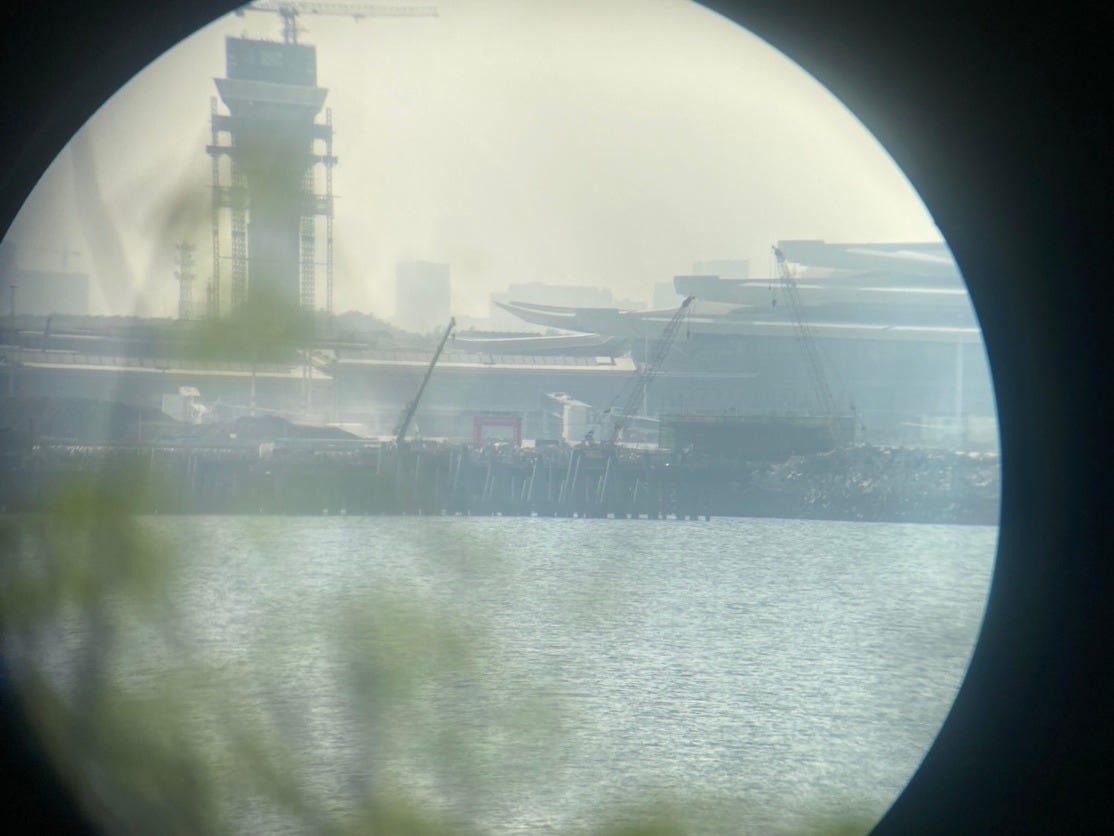
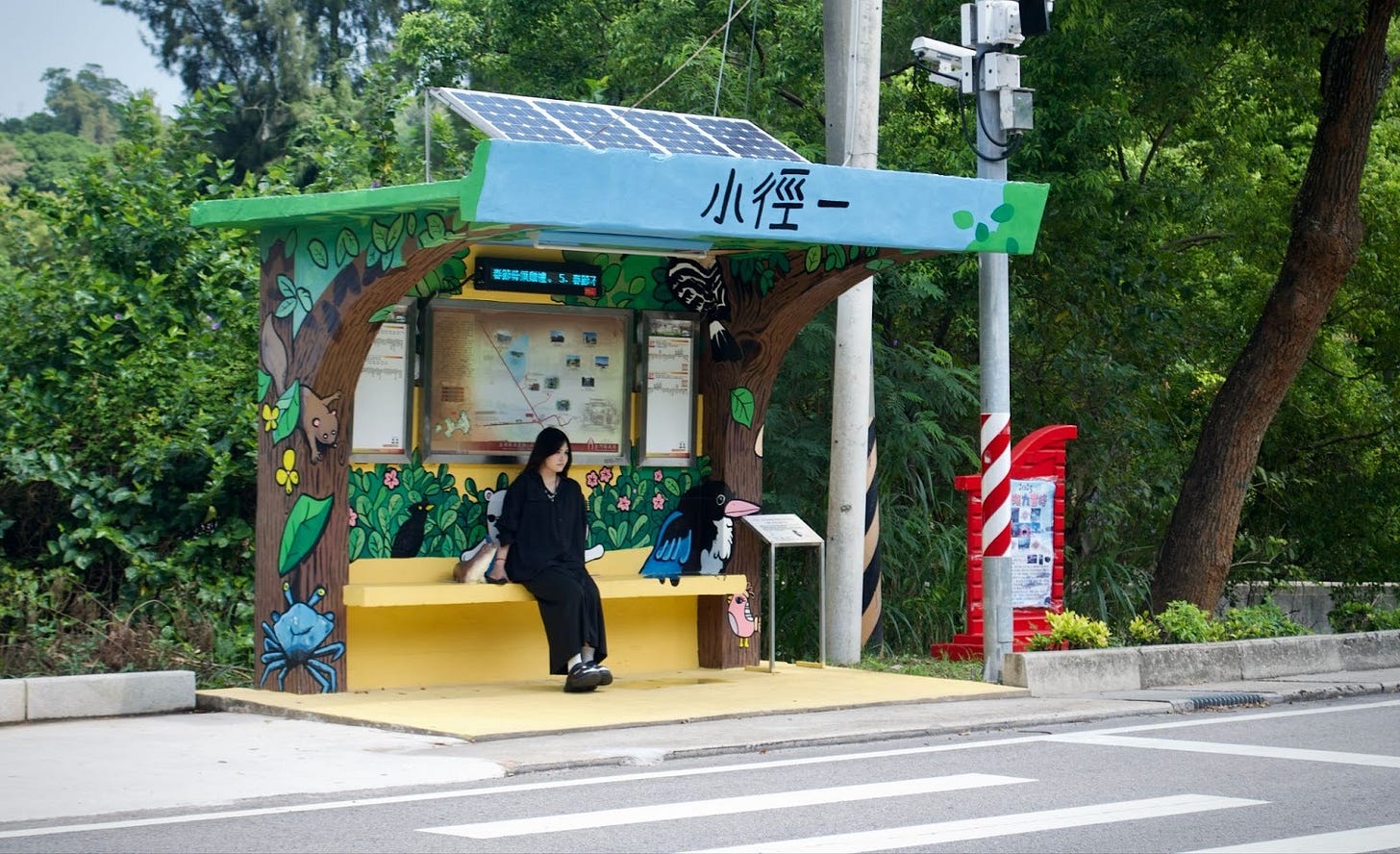
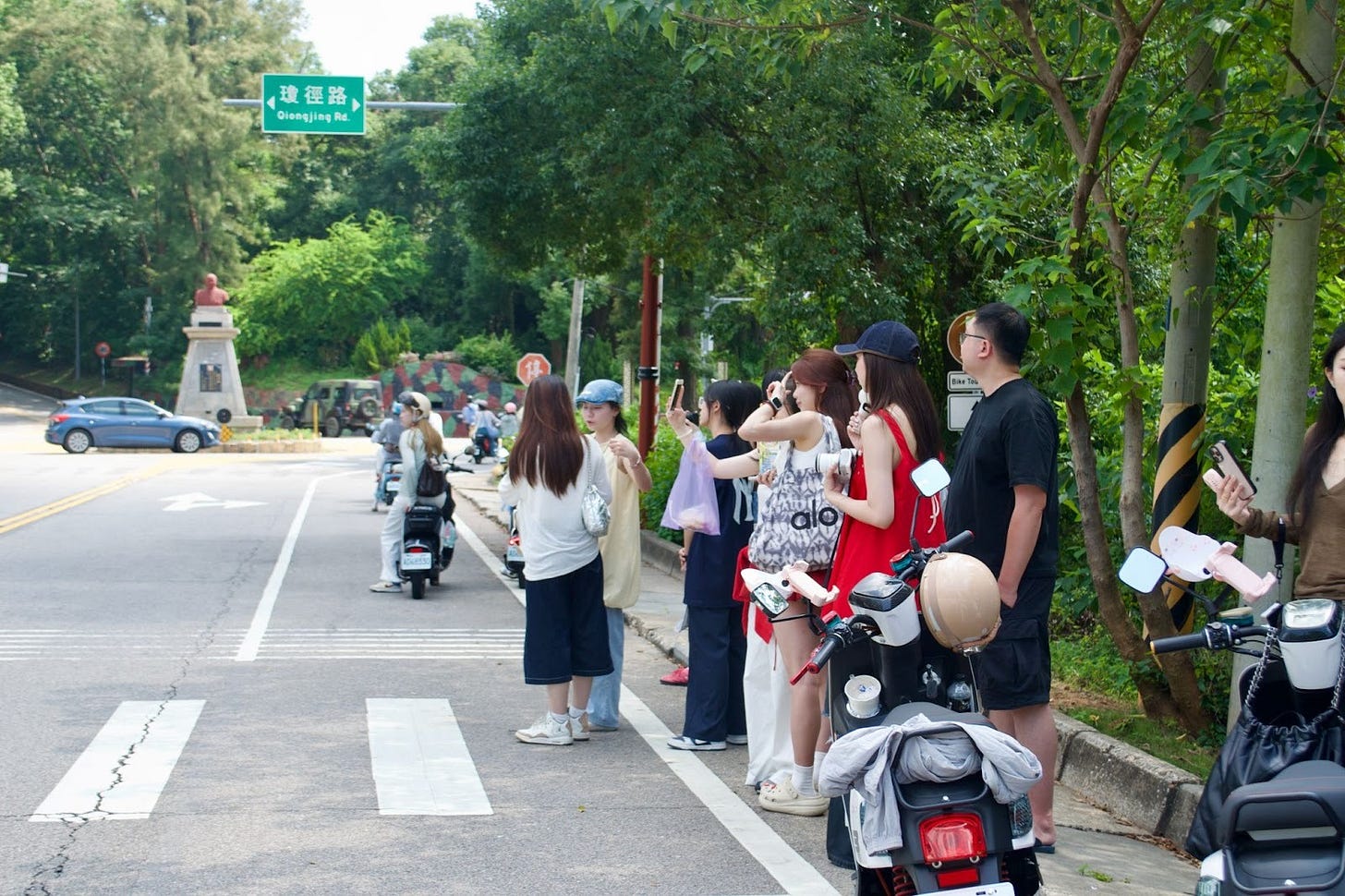
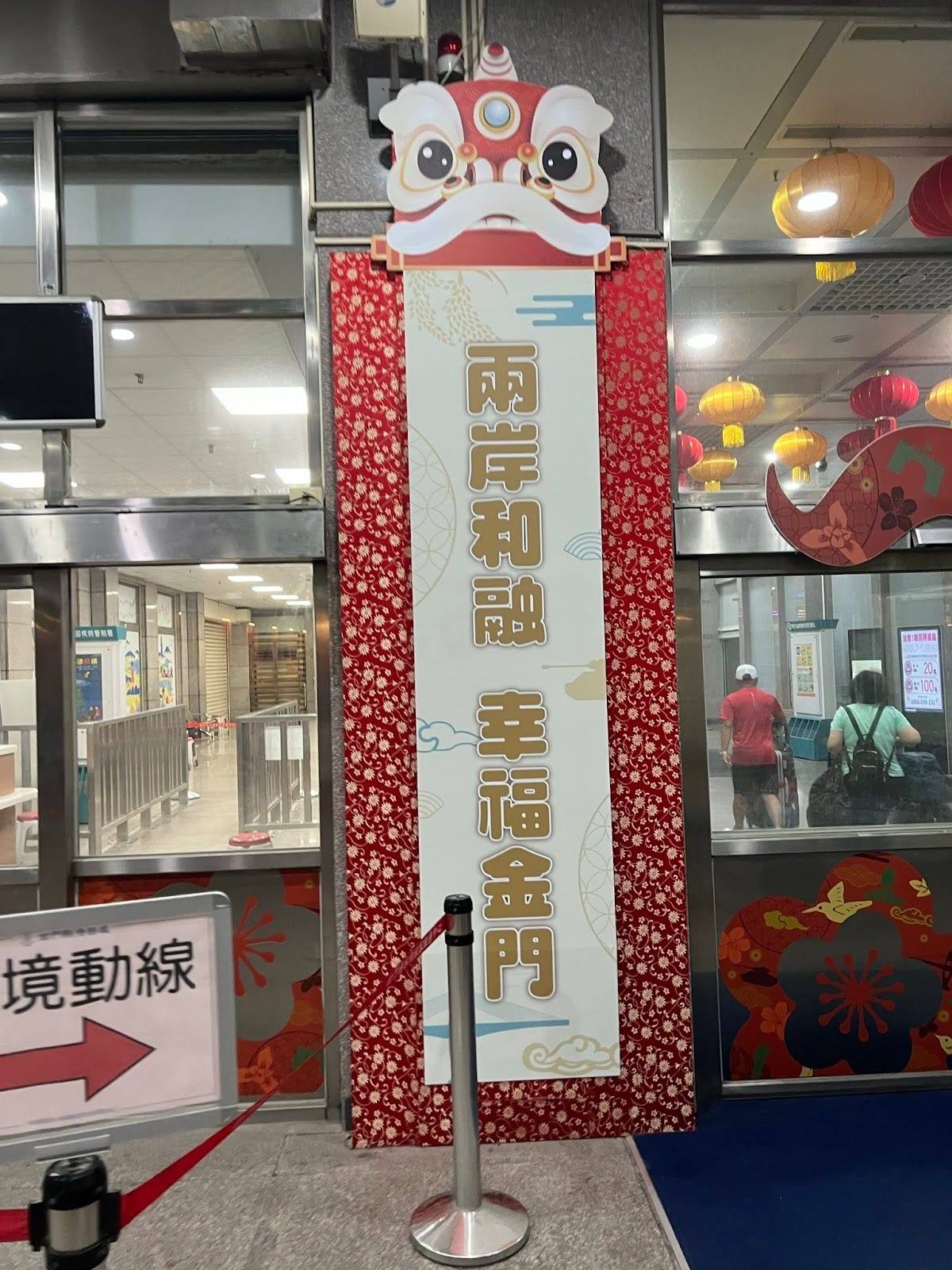
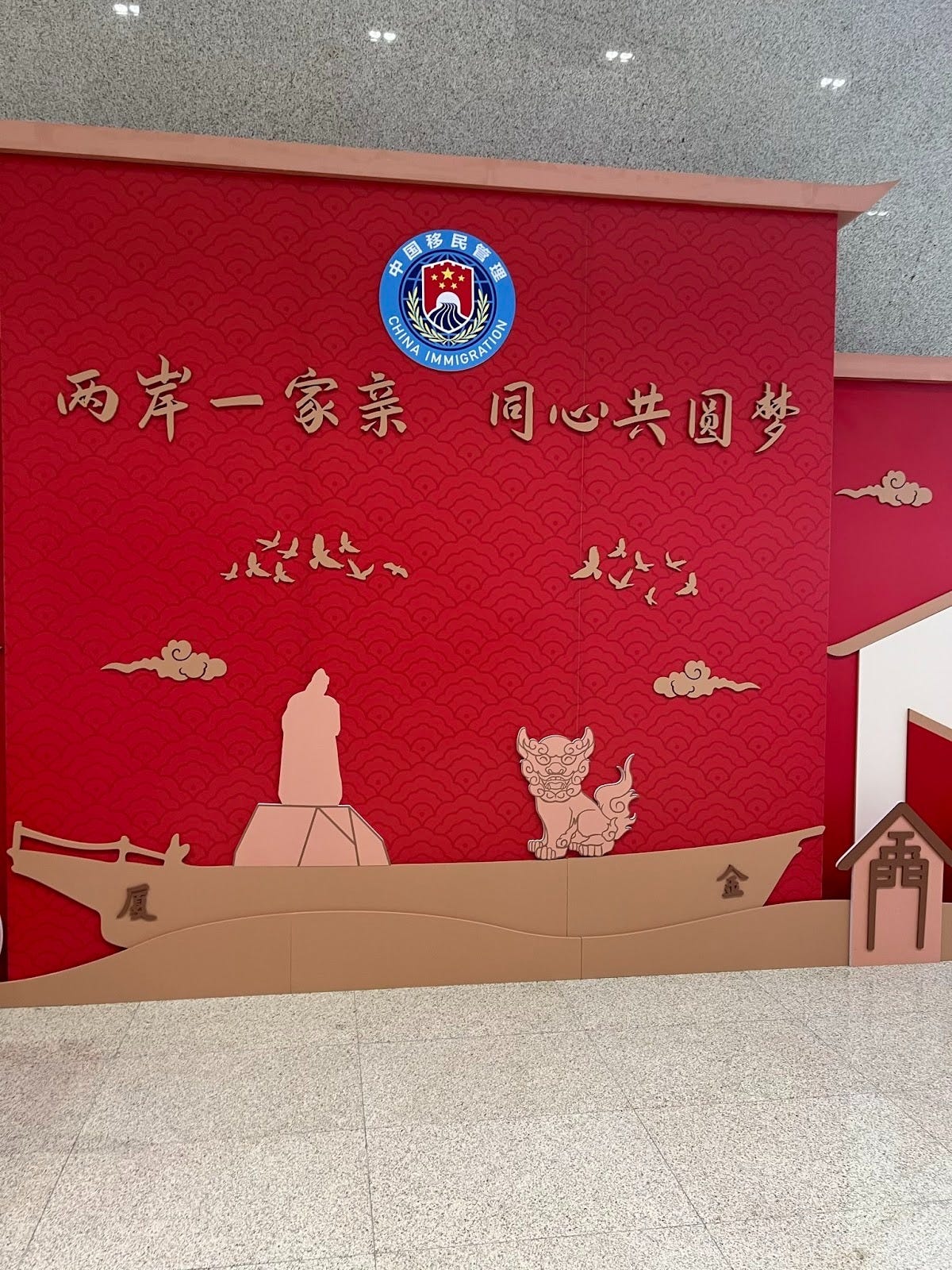
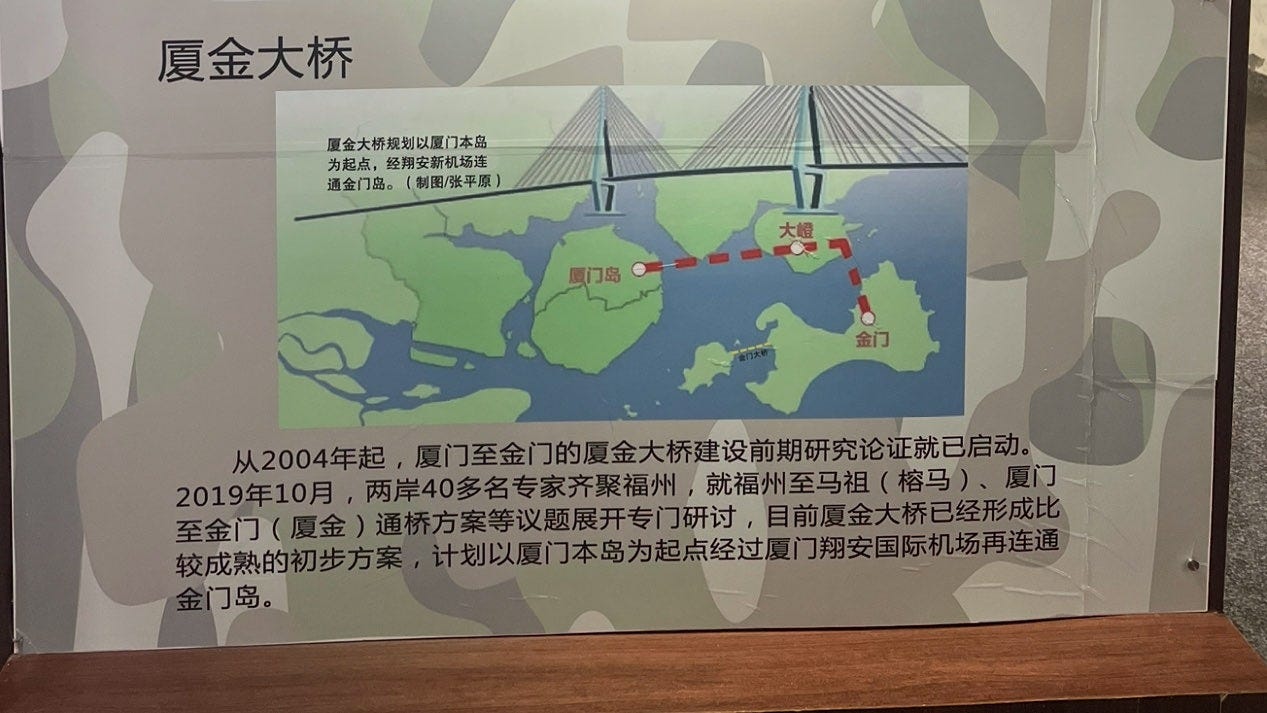
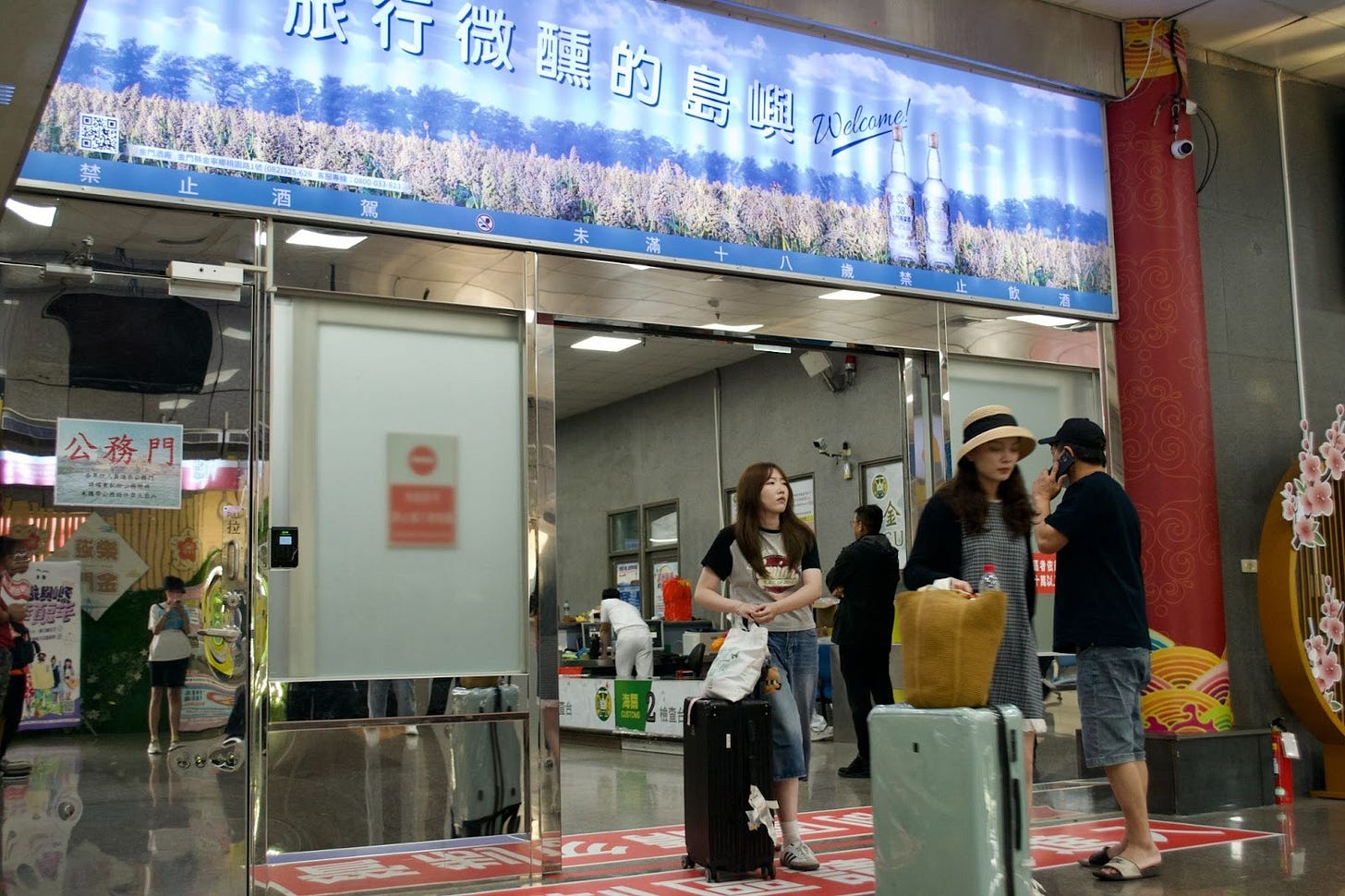
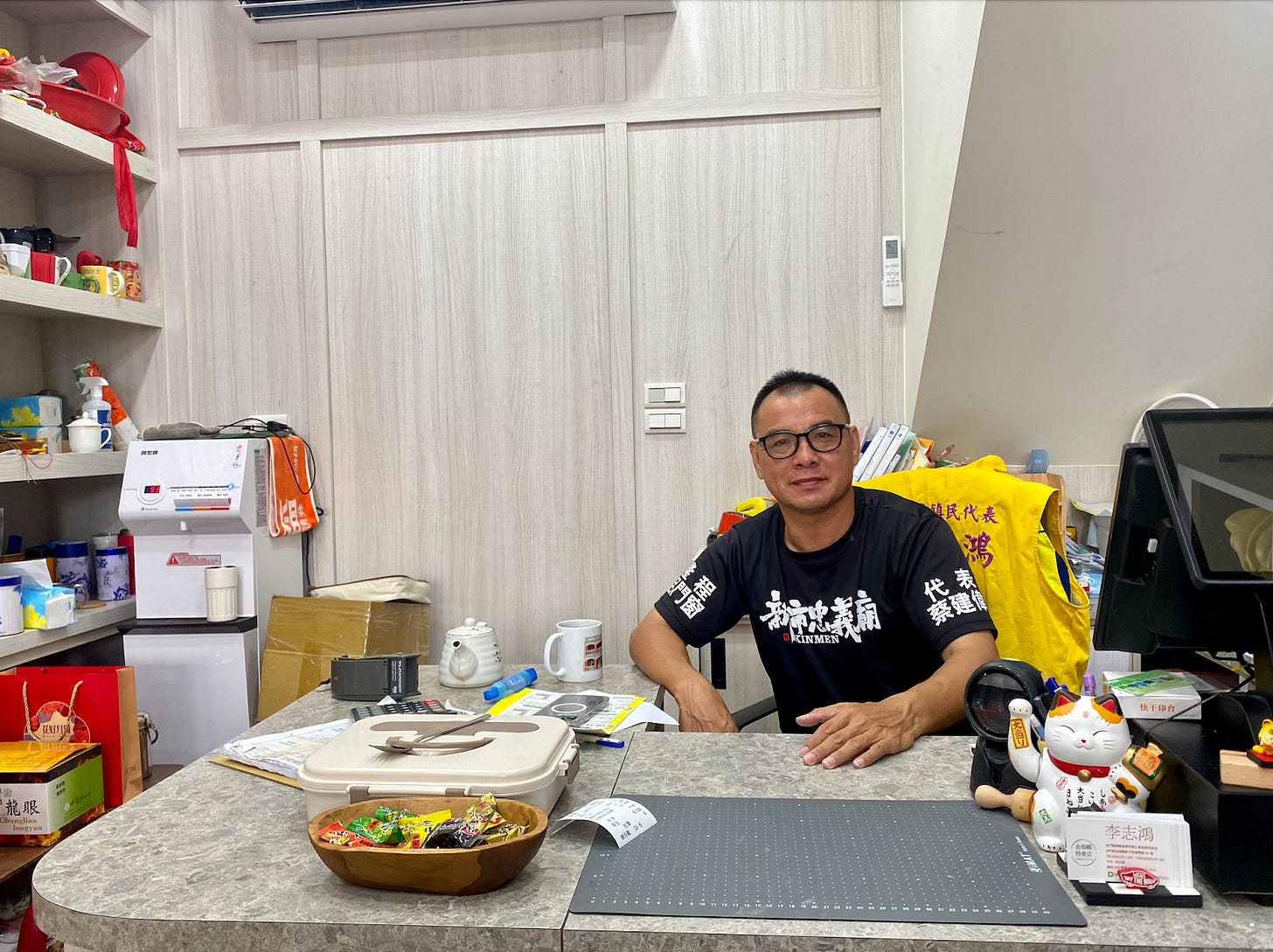
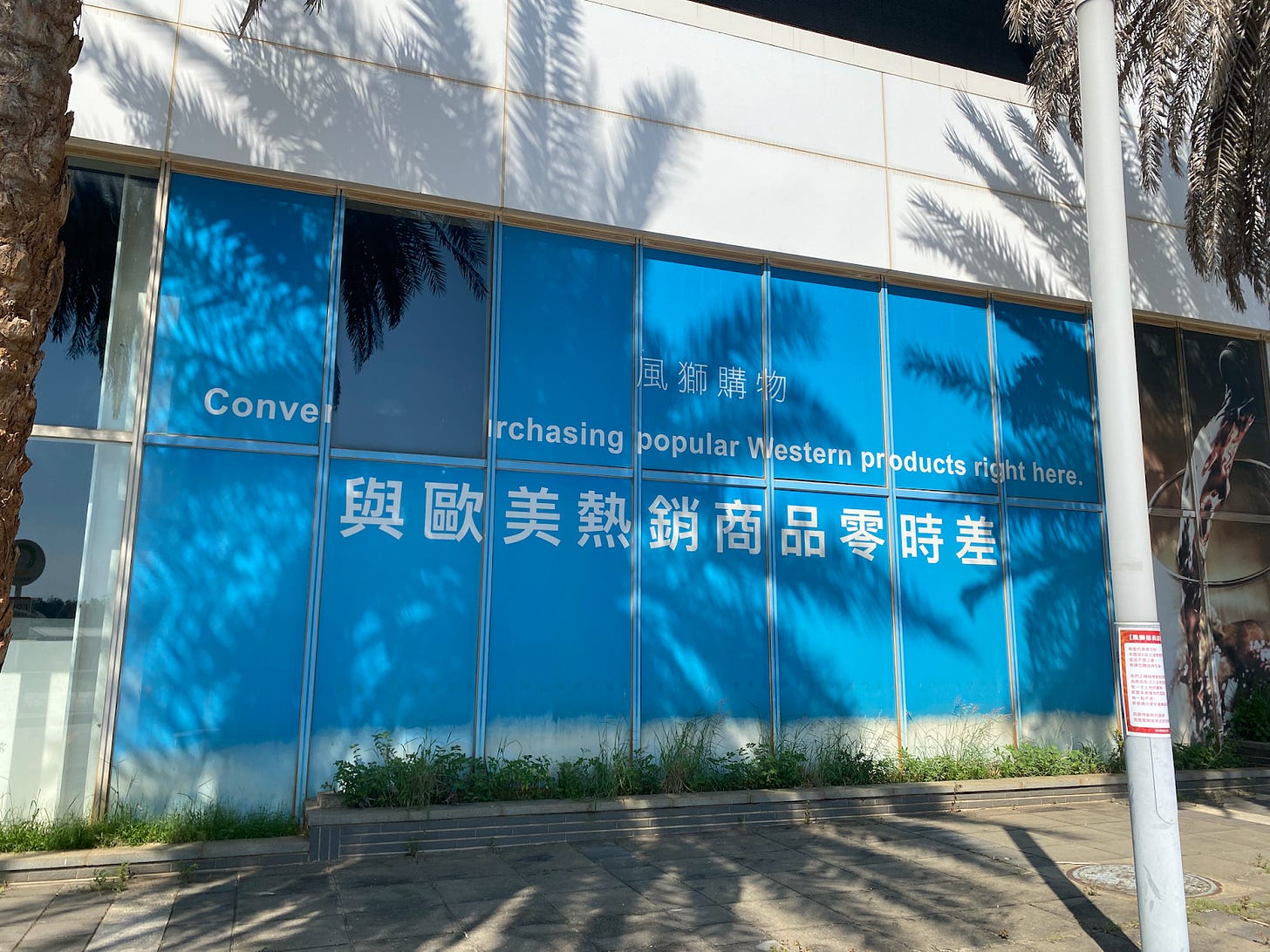
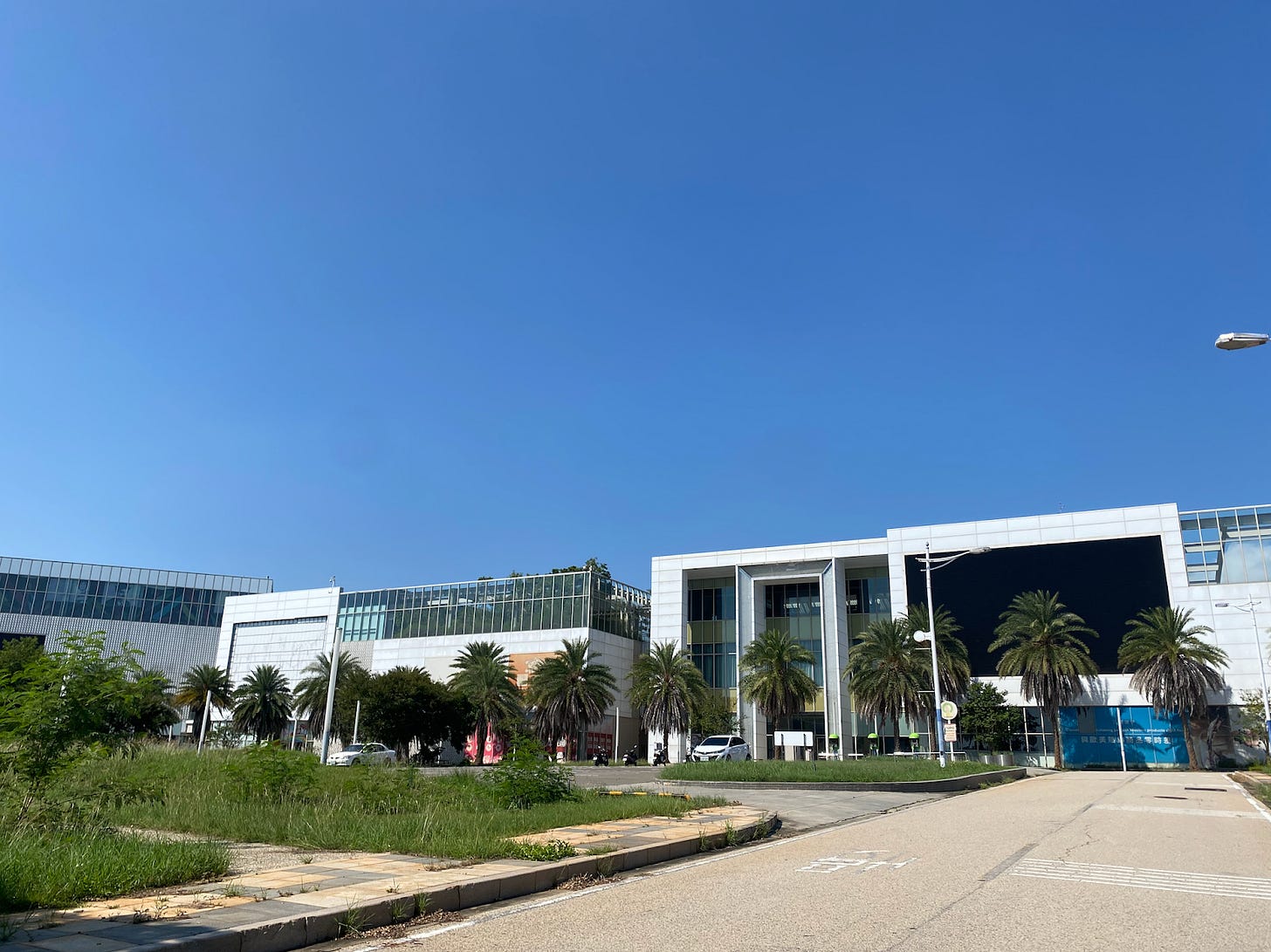

I am curious, although I doubt this came up in interviews: is the Fujian residency requirement for visiting Kinmen vigorously enforced? Or are Chinese able to travel to Fujian and then get a travel permit to Kinmen een if they technically shouldn't?